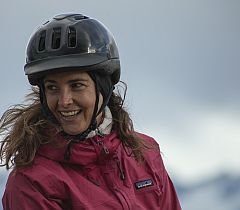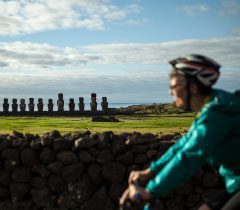Entre serras e gaúchos: uma incrível viagem no tempo pela Reserva de Conservação Torres del Paine
In the majestic landscape of Patagonia, to the northeast of Torres del Paine National Park and cocooned by the Cuernos del Paine and the Sierra Baguales peaks, exists an ecosystem of fascinating history and prehistory, rich biodiversity, and cherished local culture. This is nothing less than the Torres del Paine Conservation Reserve. Through innovative practices of tourism and conservation, such as regenerative cattle ranching, this unique territory today is being restored and protected for present and future generations.
Por Ladera Sur.
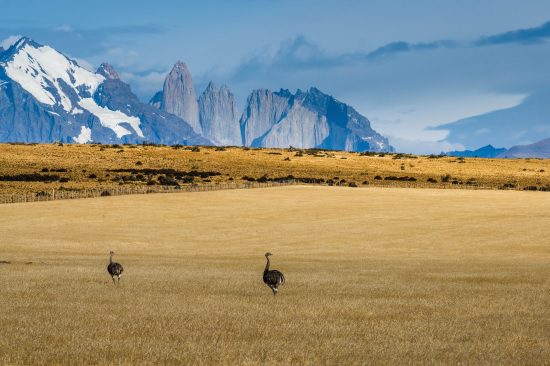
Located just 1.3 km from Laguna Azul in the renowned Torres del Paine National Park, the reserve is home to 6,000 hectares of flourishing ecosystems. It´s almost as if the reserve was an extension of the Torres del Paine National Park itself. Located in the Region of Magallanes and Chilean Antarctica, it is here that the Patagonian steppe, the Andean desert, the pre-Andean scrubland and the Magellanic Forest coexist with various water sources such as the Zamora River and Las Chinas River, which snake across this vast and remote territory.
In 2019, the Explora team decided to embark on the conservation, protection and research of these southern most lands in the Americas. In these windswept, remote and silent mountains it was no coincidence that in the first scientific studies, 131 species of flora, 50 species of birds and 15 species of mammals were uncovered in the Torres del Paine Conservation Reserve.
Para desenvolver este projeto, criamos uma aliança inovadora (parceria corporativa) com a The Nature Conservancy (TNC), organização que há décadas trabalha pela conservação de territórios ao redor do mundo, que irá desenhar e supervisionar o plano de conservação.
Safeguarding the geological, paleontological, cultural and historical identity of this reserve for posterity therefore comes hand in hand with protecting its rich vegetation and animal species such as Chilean flamingos (Phoenicopterus chilensis), condors (Vultur gryphus), pumas (Puma concolor) and guanacos (Lama guanicoe).
The metamorphosis of a territory and its inhabitants
This territory with its expansive landscapes, wonderful mountain silhouettes and striking bodies of water was unrecognizable 65 million years ago. At that time, during the Mesozoic era, this reserve located in the province of “Última Esperanza” (Last Hope), was part of the supercontinent called Pangea and it was under water. This explains the presence of marine fossils today in the area.

Many millennia later, the region would undergo great deformations, giving rise to the Andes Mountains and, during the Cenozoic era, the expansion of glaciers that helped form the great lakes and mountainous reliefs we see today. Paula López Wood – writer, researcher and audiovisual producer with a master’s in creative writing from New York University – unpacked these ideas in a long-term investigation of the reserve.
“Small traces of the past concealed in geological formations such as Cerro Guido or Sierra Baguales, provide important signs of life from other periods of its great geological history,” writes López Wood, adding that the discovery of the iconic Milodon Cave, a few kilometers from the reserve, was one of the first historical landmarks in Patagonia that bridged the gap between science and tourism.
Some of the most significant prehistoric discoveries in the region by López Wood include the remains of a 15,000-year-old four-metre tall ground sloth (Mylodon darwini), the fossilised 129-139 million year-old remains of ichthyosaurs (a marine reptile) in the Tyndall Glacier, the 85 million year-old remains of Pachydiscus (a specie of large ammonite) in Cerro Toro and the 68 million year-old hadrosaurs (duck-billed dinosaur) in Cerro Guido.
Beyond the geological transformations and the ground breaking paleontological findings of López Wood, human beings only began to make their mark in this southern territory no more than 11,000 years ago. This timing is borne out by studies of archaeological discoveries in various Magellanic caves, including tools and rock art.

“From the work carried out in the areas surrounding the reserve, we know that the first settlers were small groups of hunter-gatherers who cohabited with the megafauna, living on a diet predominantly of guanaco. They probably disappeared with the same megafauna before another wave came to the region,” argues López Wood in her investigation.
Thanks to written accounts by Patagonian explorers and chroniclers in the late 19th and early 20th centuries, as well as recent anthropological studies, today we have insights into how the more recent indigenous groups, such as the Tehuelches, lived, interacted and migrated.
The heritage of cattle ranches and gaucho culture
The arrival of the first sheep to the region in 1876 from the Falkland Islands heralded the rise of the region´s renowned cattle ranches. From that moment on, the industry witnessed year-on-year growth due to increasing demand, and by 1910 animal husbandry had come to dominate much of the economy across the Magellanic landscape.
At the same time, gaucho (Patagonian cowboy) culture was taking root alongside the farmers and muleteers who worked on the ranches. The result was the creation of a culture of local landscape connoisseurs, knowledgeable in the remotest corners of Magallanes. “The life of the muleteers who worked in the current Conservation Reserve was solitary, hard and very connected to nature,” says Paula López Wood.
In the current territory where the Torres del Paine Conservation Reserve is located, there used to be three important cattle ranches. Estancia Santa Gemita enjoyed one of the most impressive aspects in the area, overlooking the majestic Paine Mountain Range. El Mercado was a small estate with an impressive lenga (Nothofagus pumilio) forest. The 2 de enero estancia was a large ranch and its buildings are preserved to this today.
Romina Da Pieve, assistant manager of Explora Conservation Reserves, says that part of the project to create the reserve included protecting the cultural heritage of the gaucho and Explora are therefore working closely with their nieghbouring communities. One of the initiatives includes renovating an old shearing shed to receive explorers who want to soak up the local culture. Its day-to-day running is managed by the gauchos.
“Inside the shed we have reconstructed its sheep-shearing gaucho history with computer graphics, old tools and insights into how the space was used¨, the manager explains. ¨What the pioneers did here in those desperately hard years of cattle ranching was nothing short of heroic¨, she adds.
Famous buildings such as Patagonia´s largest sheep shearing shed in Villa Cerro Castillo or the old slaughterhouse in Puerto Bories stand testament to the cultural importance of animal husbandry in the region.
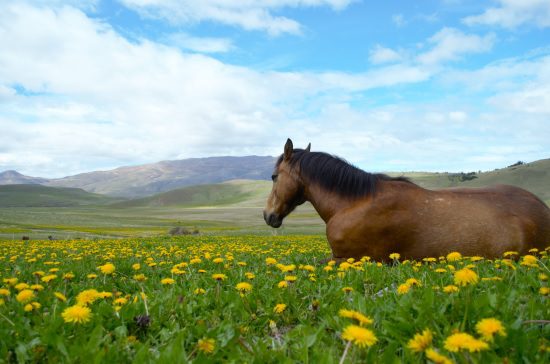
Removal of fences, horses, and regenerative stockbreeding
Da Pieve was alive to see the area when the cattle ranches still operated and families still inhabited them. However, this was a time of change, and she saw the impact on the ecosystem when those families left and little by little the cattle were removed from the land.
“I was able to see, year by year, how a natural restoration of the grazing lands occurred by the simple act of giving them a break from the grazers”, the assistant manager notes. At the same time, ranchers were removing internal fences to repair the external ones that bordered their neighbors´ properties. Wherever this was practiced, it produced a further positive surprise-impact on biodiversity.
The use of horses to transport Explora guests proved yet another regenerative and innovative practice, with its positive impact on the reserve´s soil.
Gaela Hourcq, head of the Explora stables, explains how they allow the horses to roam free in certain sectors, and then rotate these areas depending on the soil situation. “They don’t lack food, but they don´t get to choose where to graze. This year we are testing their adaptability to the colder and more exposed areas”.
At Explora there are two types of horses: a Criollo, native to the area, very resistant to the harsh weather and wonderful to ride; and an Explora horse, which is a crossbreed of Thoroughbred and Chilean horse, which is then crossed again with an Arabian, resulting in a responsive and sure-footed animal.
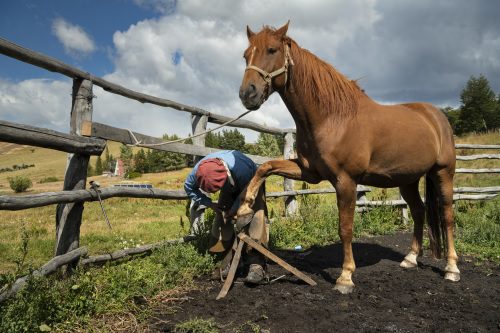
“We believe that regenerative breeding with horses should be conducted in the best possible way, and to ensure this we started a pilot program that has been running for a year already. We want to demonstrate that when animal husbandry uses the best available science or when compassionate consideration is given to how much weight we burden the animals with, we can promote and accelerate the restoration of soils,” explains Da Pieve.
From December 15th, the Conservation Reserve has begun receiving visitors from all over the world. Here they can enjoy 12.5 km of self-guided trails and diverse landscapes with unique flora, fauna, and fungus. Set in a such an historically and culturally rich landscape – this is an experience that promises to surprise each and every one of its visitors.
